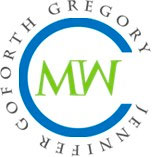Guest Post: How Ryan Douglas uses video LOIs to attract new writing clients
Note from Jennifer: Marketing yourself as a freelance content marketing writer requires creativity as well as dedication. Ryan Douglas, who wrote a guest post back in January about doubling his income after firing a client, has come up with a great way to set yourself apart from the crowd. He creates customized video Letters of Introduction for prospective clients, and I asked him to explain the process on the blog today. After you read it, check out Ryan’s website for more about his work.
 By Ryan Douglas
By Ryan Douglas
As a freelance content marketer, winning more proposals is one of the fastest ways to grow your income. Not to mention that working with the right client can open the door to other incredible opportunities.
However, this is also where many freelancers get stuck. Racking their brains to solve the puzzle of closing the deal. While some writers see this as a reflection of themselves or their qualifications, that’s rarely the case. It’s not an issue of having the required skills, it’s that they failed to make a memorable impression.
In a sea of competition, standing out is your best weapon.
Along with the powerful tactics Jennifer shares here on her blog, there are a handful of others you may have never heard of. Using video LOIs (Letters of Introduction) is one of them.
And when used correctly, video LOIs can be a game changer for landing more work.
Why Use Video LOIs
You’re probably wondering why you’d need to use a video LOI in the first place—and that’s a fair question. After all, sending regular ol’ email introductions are the industry standard, right?
True, but that’s one of the primary reasons you want to avoid them. Because doing more than your competitors is what makes you memorable.
Think about it. If you apply to a writing job with 10 other people, and you’re the only one that sends a video, who do you think will stand out the most? Yep, that’d be you.
But beyond just making an impression, video has another side benefit—being seen as a real person. Part of human nature is that it’s more difficult to ignore someone once you’ve seen their face or heard their voice.
A connection forms that goes way deeper than merely reading a proposal or seeing an email profile picture. This “bond” works to your advantage to keep top-of-mind when it comes time for prospects to make their decision.
Pick Your Platform
Video sharing has come a long way in the last few years, making it easier than ever to include in your marketing toolkit. Truthfully, it doesn’t really matter which platform you go with, as long as it fits easily into your workflow.
Here are a few possibilities to consider:
This is my preferred option. I like it because it’s very intuitive to use and fits well into my existing processes. I use Google Apps (Gmail, Drive, and Docs) for the majority of my work, and Screencastify recordings can be saved to a folder on your google drive and inserted directly into Gmail messages.
Videos are easily shared with a single click and copy and paste. They can also be edited in the software (but you’ll rarely ever need to do so).
There is a free version of the program which should meet most people’s needs. However, I use the paid plan ($24 per year) which removes the watermark from videos and includes a few extra options.
2. Loom
Loom is another popular platform, which I’ve heard good things about, but haven’t tried myself. Previously, there were several limitations on their free plan, which made it almost a necessity to upgrade. However, they recently changed their revenue model and, for now, all services are free. If you’re not a heavy Google Apps user or don’t like Screencastify, Loom is worth checking out.
3. Your Smartphone
If you’re not into third-party software, you can always use your phone to record a video. The quality of camera phones is very good these days. However, it can be a bit tedious to upload the videos which may cause you to lose interest in the process.
Do some experimenting to see what works best for you.
Tips for Making Videos
Now that you’ve got your plan in order, it’s time to make some videos. Here are few best practice ideas to generate results.
- Make it Short and Sweet. This is where people tend to go overboard. You don’t need to share your life story on camera. No one cares, and your prospect doesn’t have time to listen to it. Your entire video should be no more than one or two minutes long. Just like with your written LOI, you’re just trying to break the ice, not close the deal. Long videos will make people lose interest. Just smile, introduce yourself, and share are few tidbits about why you’d be a good fit for their project.
- Find a Connection. Just like with a LinkedIn invite, friend request, or cold email, look for some kind of common ground with the client. Anything will do: location, interests, hobbies or sports teams. The key is finding a small similarity to put them at ease. Just don’t go overboard (or be creepy about it).
- Be Genuine. The biggest advantage of using video is showing your personality and offering insight into the type of person you are. This is what helps the client know you’re a good fit. Acting cheesy, overconfident, or trying to be something you’re not will only hurt you later on. An honest working relationship is a major part of creative happiness and finding success.
- Include a Written LOI. Videos should be used as a supplement to your LOI, not the main feature. After all, you can’t include clips in a video (which are a vital part of your LOI) and there’s no guarantee they’ll watch the video in the first place. Using both ensures you have all bases covered. Keep in mind that the video is more of a character reference than a sales piece. Once they read your LOI, and think you’re a good fit, they can watch the video to confirm their assumptions.
As an example, check out this recent video I made for a client (below). I won’t be winning Academy Awards anytime soon, but it’s more than enough to get the job done.
Utilizing video is a relatively easy way to add more power to your existing LOIs. Not only to make your stand out more but help to build rapport with your prospects. The key is to be personable in your recordings but in an efficient manner. Otherwise, you’ll waste time and lose interest in the process.
Lastly, don’t worry about being a little nervous on camera. Getting tongue tied and making a few mistakes makes you look more authentic. And authentic freelancers are who clients want to work with.
Are you considering trying out Ryan’s advice and sending video LOIs? Do you have any questions about how or why you might want to?


What a great idea! Thanks for sharing and demonstrating this approach, Ryan. I will try it after signing up for Screencastify. I can’t wait to put together a brand new marketing campaign! Thanks again.
You’re welcome, Lee. I think you’ll like the results using this new strategy.
Clients often comment on how impressed they are to see a video included with an LOI.
What a super cool idea, Ryan! Thanks so much for sharing it along with suggested platforms and tips. If I get up the courage, I may give it a try!
You bet, Holly.
And recording videos is not as intimidating as you might think. Once you get a few under your belt, the nerves really do go away.
I like the idea, but it seems like it’d be trickier to do if you have concerns about your appearance or aren’t feeling well.
As for me, I’m pregnant and that’s a deal-breaker for some clients (as silly as that probably sounds). I don’t tell any prospects about it, but I’ve heard from prospective clients before who’ve said writers quit when they became pregnant, so it seems that’s a reason for some clients to pick a different writer.
Thinking about issues like a visible disability or even being a member of a minority or disadvantaged group, would it still make sense to do a video LOI? Genuinely curious if anyone else can speak to this.
I’d agree that I wouldn’t want to disclose to a prospective client up front that I was pregnant. I think you could still make a video where you’re shown from the shoulders up, and nobody would even guess. As for other visual identifiers, I don’t think there’s a right or wrong answer, except that any potential client who wouldn’t hire a freelancer based on their ethnicity or disability status is probably not someone you’d want to work with anyway.
Following up on what Cat said – I use a standing desk, so my videos are usually shot from the chest up. Half the time, I have shorts and flip-flops on, but no one is any the wiser.
Ditto on her second point also. If a client is going to discriminate on anything besides the quality of your work – I’d look elsewhere.
Great idea and information Ryan. Believe it or not I’d been discussing this very idea with one of my mastermind groups, so your post couldn’t be timlier! Thanks.
Dave, great minds think alike (pun intended). Video makes a huge impression and is a great way to build rapport.
Try it out and let us know how it goes.
How do you send/attach/link the file?
I started tinkering with video LOI about two weeks ago but have been uploading them as an unlisted YouTube file then sending the link. The problem with links or attachments is that some people may be hesitant to open then.
So, what format do you use to send it to optimize your video open and view rate? And, do you use any kind of analytics to figure out who is opening your videos?
Craig,
I use Screencastify and include the video as a link in my email. For tracking, I added the “RocketBolt” plugin into my Gmail so I can see if/when clients open the message and whether or not they click the links.
It’s a simple setup that fits my workflow.